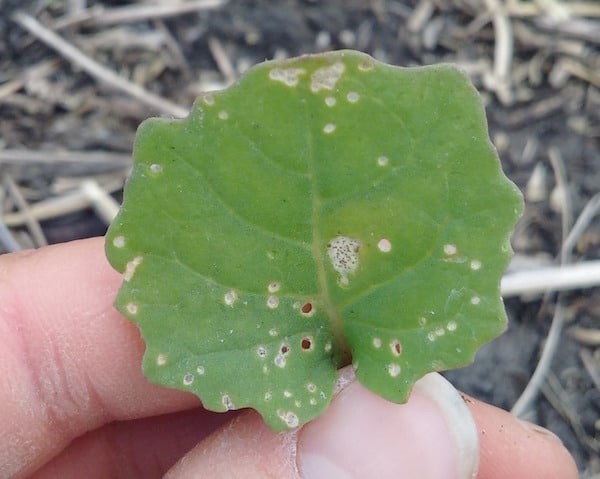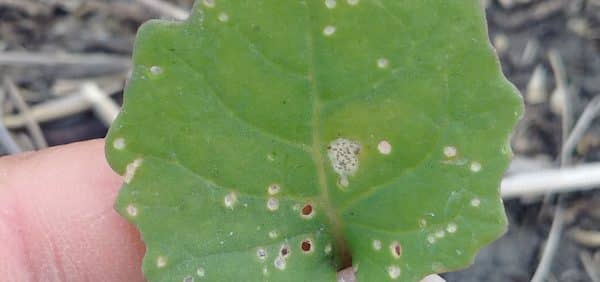Blackleg infection prior to the four-leaf stage can result in serious yield loss, but blackleg can be difficult to identify on such small plants.

Early season scouting (hand lens may be needed): Leaf lesions are dirty white, round to irregularly shaped, and usually dotted with numerous small, black pycnidia (pepper-like spore-producing structures.) Under moist conditions, a viscous pink liquid oozes from the pycnidia, releasing pycnidiaspores.
The pathogen uses wounds on the plant caused from wind/hail damage and insect feeding to establish itself. Scouting fields that had early damage would be a good place to start looking for blackleg lesions. Moist, warm conditions favour for rapid development and dispersal of the disease.
Controlling blackleg early is important. In high-risk fields, consider a fungicide when canola is at the 2- to 4-leaf stage.
Foliar infection can occur from the cotyledon stage to bolting, and even to flowering of the crop. Earliest infection results in the most significant stem cankering by maturity. Note that a single application of fungicide may not be sufficient to completely protect the plant during this lengthy period. Read more.
Late season scouting: Stem lesions may be up to several inches in length, and are usually white or grey with a dark border. Numerous pycnidia form in the centre of the lesion. Lesions or cankers at the base of the stem may appear as a general blackening, with stem tissue constricted or pinched at the soil surface.
Further reading:
Spraying for blackleg – the decision
Blackleg management tips
Gary Peng’s study on fungicide for blackleg
Canola Encyclopedia section on blackleg
Unsure it’s blackleg? Try the Canola Diagnostic Tool

